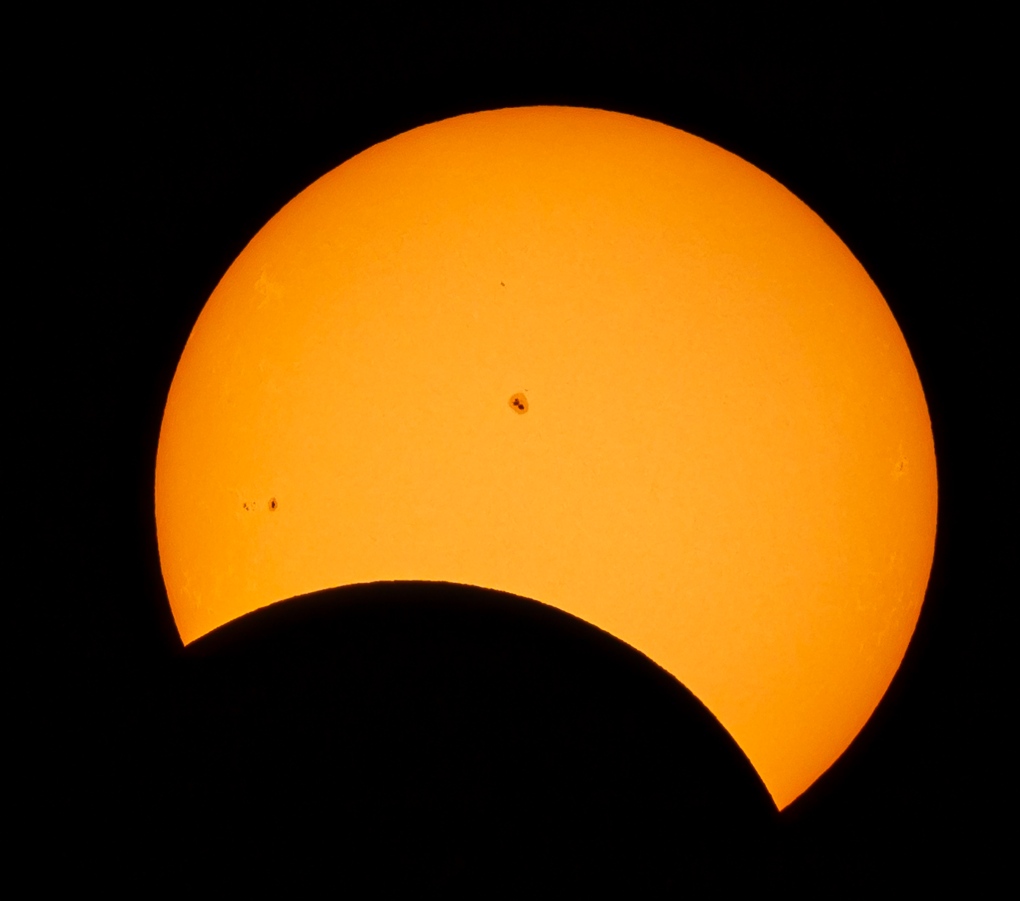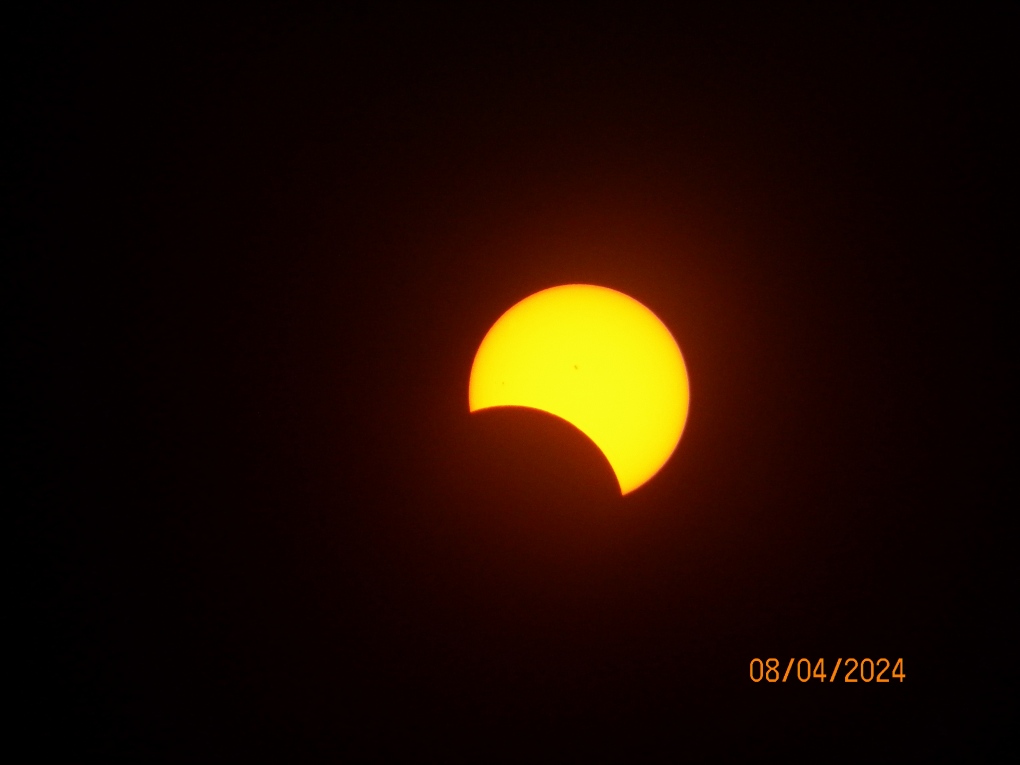Here’s what the eclipse looked like in Calgary
Millions of people across the country had their eyes on the skies on Monday, taking in a solar eclipse.
In Calgary, beginning at 11:48 a.m. MT, the moon began to pass between Earth and the sun, partially blocking the star from sight.
At 12:43 p.m., 40 per cent of the sun was blotted out before the moon receded once again, passing out of the path at 1:38 p.m.
The path of totality, where regions were completely plunged into darkness after the moon completely covered the sun, ran across much of the eastern U.S. as well as parts of Ontario, Quebec and Atlantic Canada.
Some CTV News Calgary viewers captured some awe-inspiring shots of the celestial event.
 Matt Melnyk captured this shot of the partial solar eclipse from northwest Calgary on April 8, 2024. (Submitted: Matt Melnyk)
Matt Melnyk captured this shot of the partial solar eclipse from northwest Calgary on April 8, 2024. (Submitted: Matt Melnyk)
 Gord Simonin submitted this picture of the partial solar eclipse taken in Riverbend in Calgary on April 8, 2024. (Submitted: Gord Simonin)
Gord Simonin submitted this picture of the partial solar eclipse taken in Riverbend in Calgary on April 8, 2024. (Submitted: Gord Simonin)
 Mike Foreman took this picture of the partial solar eclipse from Springbank, in Rocky View County Alberta, on April 8, 2024. (Submitted: Mike Foreman)
Mike Foreman took this picture of the partial solar eclipse from Springbank, in Rocky View County Alberta, on April 8, 2024. (Submitted: Mike Foreman)
Watching the eclipse
One of the busiest places in Calgary for eclipse watchers was the Telus Spark science centre.
“This is obviously a rare celestial event, so we need to celebrate it,” said Zack Anderson with Telus Spark.
Ahead of the big event, Anderson says guests were able to view a special eclipse-themed video in the Dome Theatre called Chasing Shadows.
“We also have the Royal Astronomical Society of Canada that will be on site with their gadgets to help look at the sun in a safe way and give us some really, really great information about it,” he said.
Since Calgary only experienced a partial eclipse, Anderson says Telus Spark set up a special live feed from NASA of the full eclipse.
“You can see the partial eclipse outside, then come inside and see the full thing.”
How rare are eclipses?
While eclipses themselves aren’t too rare, Anderson says it’s fairly special because its taking place over a densely populated area.
“There are about two to five that happen every year and you can actually trace their paths just because of the way the planet and the moon move,” Anderson said.
“Sometimes the shadow will be on the ocean or the Sahara Desert, all those kinds of things, so it’s a pretty special opportunity.”
He says the angle and movement of the moon will create more of a shadow – or penumbra – for residents in Eastern Canada.
“The moon will be totally blocking the sun, which is what’s called a total eclipse, and it’s that path of totality, which has totally covered the sun’s light.”
Safety is a big concern
Whether it’s a partial or total solar eclipse, viewing the sun without protection is dangerous and it’s important people have the proper protection for viewing.
“We’ll be providing glasses, one per family, so that you can safely look at the eclipse and not damage your eyes,” Anderson said.
Anderson says it is never a good idea to ever look at the sun, but considering an eclipse, people still want to see what’s going on.
“Don’t look at the sun unless you have protection. So, specifically-rated eyeglasses for looking at eclipses – please don’t use sunglasses,” he said.
“Welding masks do work as well.”
Anderson says there are also homemade options that work like pinhole cameras, casting a shadow onto a piece of paper, showing you where the sun is.
You can read more about Monday’s solar eclipse and view a live feed of the event on CTVNews.ca.
View original article here Source









